2012 Florida Accessibility Code for Building Construction Pocket Guide
404.2.4 Maneuvering Clearances. Minimum maneuvering clearances at doors and gates shall comply with 404.2.4. Maneuvering clearances shall extend the full width of the doorway and the required latch side or hinge side clearance.
EXCEPTION: Entry doors to hospital patient rooms shall not be required to provide the clearance beyond the latch side of the door.
404.2.4.1 Swinging Doors and Gates. Swinging doors and gates shall have maneuvering clearances complying with Table 404.2.4.1.
Table 404.2.4.1 Maneuvering Clearances at Manual Swinging Doors and Gates
|
Type of Use |
Minimum Maneuvering Clearance |
||
|
Approach Direction |
Door or Gate Side |
Perpendicular to Doorway |
Parallel to Doorway (beyond latch side unless noted) |
|
From front |
Pull |
60 inches (1525 mm) |
18 inches (455 mm) |
|
From front |
Push |
48 inches (1220 mm) |
0 inches (0 mm) 1 |
|
From hinge side |
Pull |
60 inches (1525 mm) |
36 inches (915 mm) |
|
From hinge side |
Pull |
54 inches (1370 mm) |
42 inches (1065 mm) |
|
From hinge side |
Push |
42 inches (1065 mm) 2 |
22 inches (560 mm) 3 |
|
From latch side |
Pull |
48 inches (1220 mm) 4 |
24 inches (610 mm) |
|
From latch side |
Push |
42 inches (1065 mm)4 |
24 inches (610 mm) |
-
Add 12 inches (305 mm) if closer and latch are provided.
-
Add 6 inches (150 mm) if closer and latch are provided.
-
Beyond hinge side.
-
Add 6 inches (150 mm) if closer is provided.
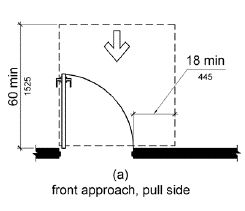
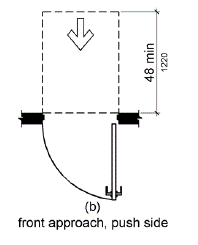
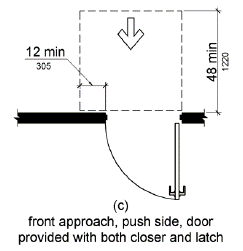
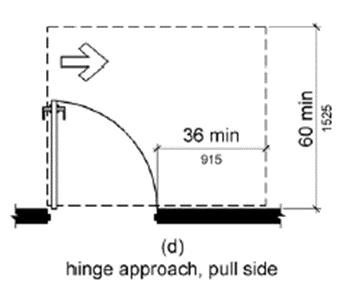
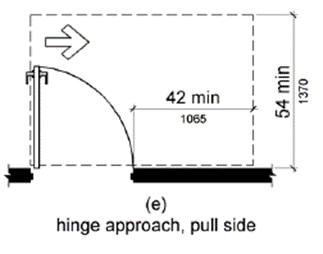
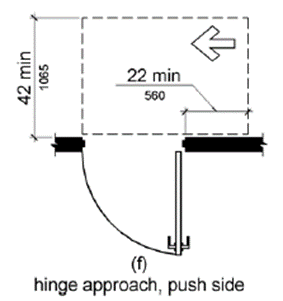
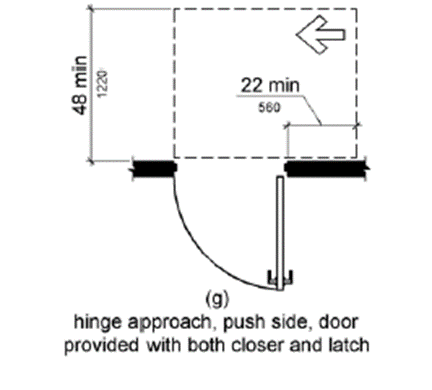
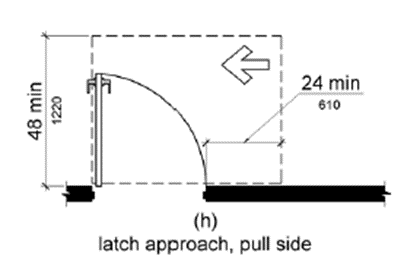
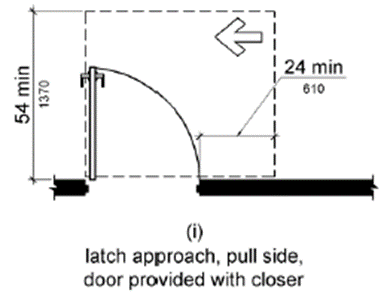
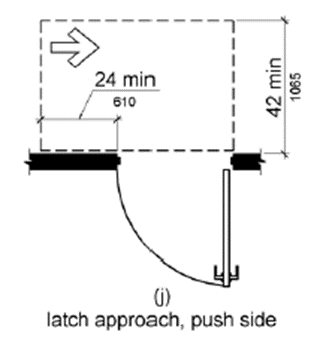
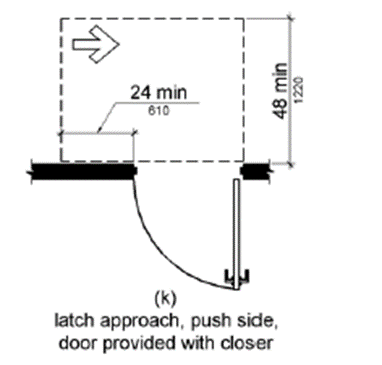
Figure 404.2.4.1 Maneuvering Clearances at Manual Swinging Doors and Gates
404.2.4.2 Doorways without Doors or Gates, Sliding Doors, and Folding Doors. Doorways less than 36 inches (915 mm) wide without doors or gates, sliding doors, or folding doors shall have maneuvering clearances complying with Table 404.2.4.2.
Table 404.2.4.2 Maneuvering Clearances at Doorways without Doors or Gates, Manual Sliding Doors, and Manual Folding Doors
|
Minimum Maneuvering Clearance |
||
|
Approach Direction |
Perpendicular to Doorway |
Parallel to Doorway (beyond stop/latch side unless noted) |
|
From front |
48 inches (1220 mm) |
0 inches (0 mm) |
|
From side 1 |
42 inches (1065 mm) |
0 inches (0mm) |
|
From pocket/hinge side |
42 inches (1065 mm) |
22 inches (560 mm) 2 |
|
From stop/latch side |
42 inches (1065 mm) |
24 inches (610 mm) |
-
Doorway with no door only.
-
Beyond pocket/hinge side.
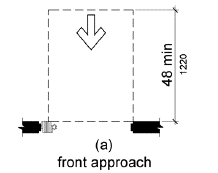
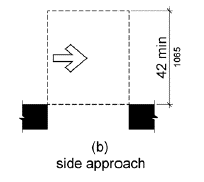
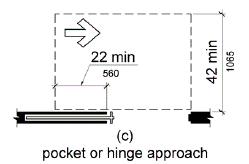
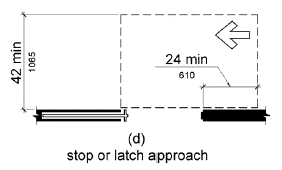
Figure 404.2.4.2 Maneuvering Clearances at Doorways without Doors, Sliding Doors, Gates, and Folding Doors
404.2.4.3 Recessed Doors and Gates. Maneuvering clearances for forward approach shall be provided when any obstruction within 18 inches (455 mm) of the latch side of a doorway projects more than 8 inches (205 mm) beyond the face of the door, measured perpendicular to the face of the door or gate.
Advisory 404.2.4.3 Recessed Doors and Gates. A door can be recessed due to wall thickness or because of the placement of casework and other fixed elements adjacent to the doorway. This provision must be applied wherever doors are recessed.
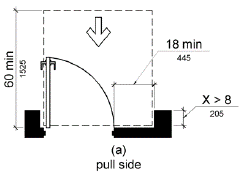
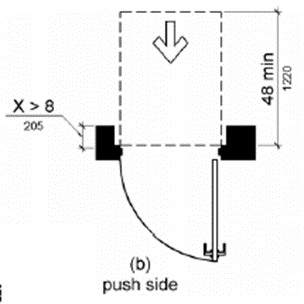
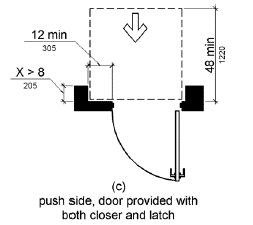
Figure 404.2.4.3 Maneuvering Clearances at Recessed Doors and Gates
404.2.4.4 Floor or Ground Surface. Floor or ground surface within required maneuvering clearances shall comply with 302. Changes in level are not permitted.
EXCEPTIONS: 1. Slopes not steeper than 1:48 shall be permitted.
2. Changes in level at thresholds complying with 404.2.5 shall be permitted.

User Comments/Questions
Add Comment/Question